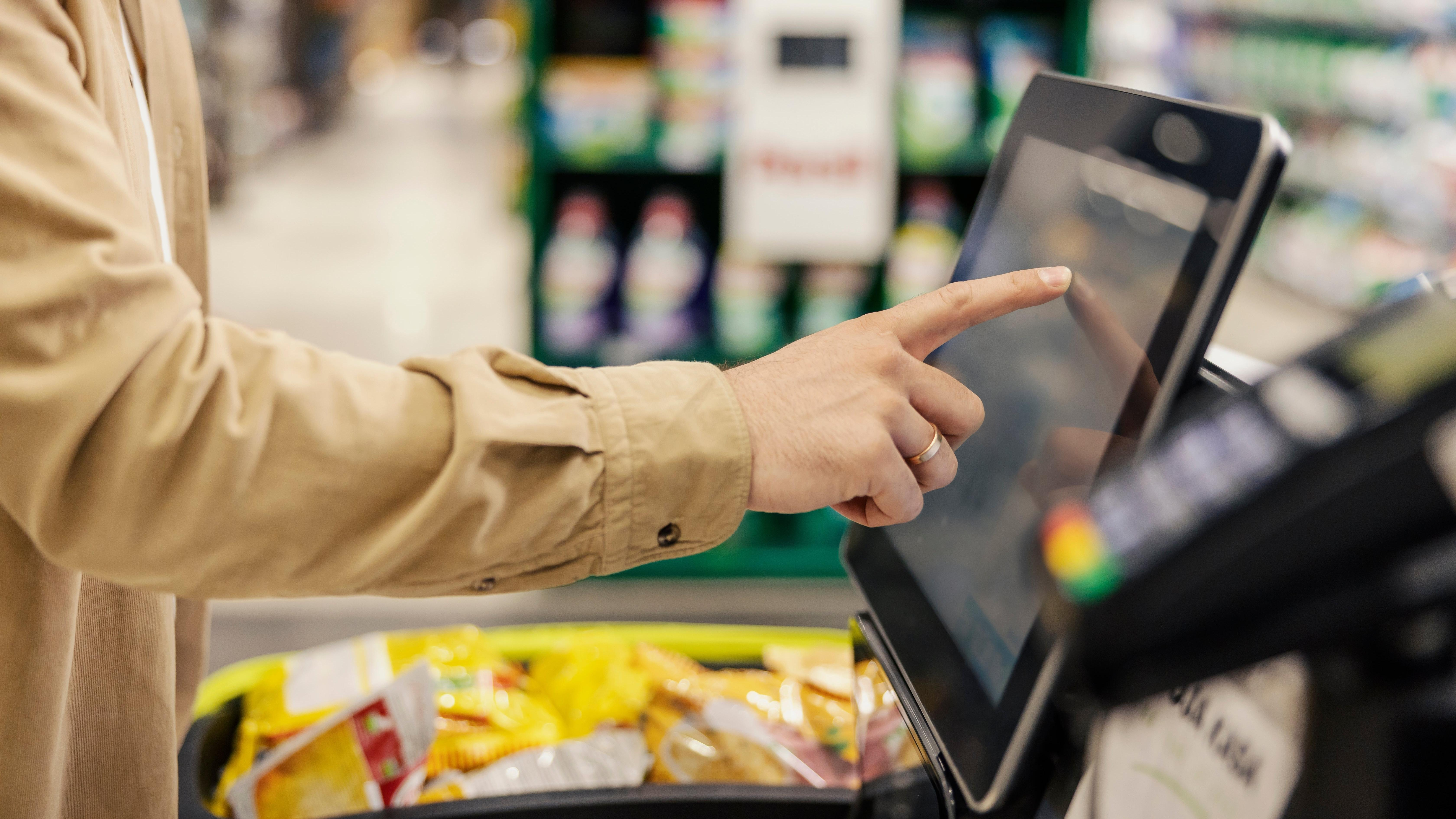Self-Checkout Still Has A Long Way To Go
Customers still have plenty of gripes when it comes to self-checkout, and stores have taken notice.
I'm admittedly not a fan of self-checkout, especially if I've got more than a basket's worth of shopping to do—but sometimes, I have no choice. Our local grocery store usually only has a few human cashiers staffed at any given time, and when things get busy, I'm inevitably scanning my own groceries. This is a (nearly) universal problem among American shoppers in 2023.
Frankly, I'm slow at it. I'm always hunting for bar codes on packages, I make typos in produce searches, and more often than not, the scale in the bagging area signals an error, which means I'll need assistance clearing it. Then I inevitably get frustrated, and suddenly, the technology meant to make everyone's lives easier becomes nothing but a burden. And now, the Associated Press reports that retailers are not as happy as they thought they'd be with self-checkout, either.
Retailers aren’t happy with self-checkout machines
Some companies believed that installing self-checkout stations would save them on labor costs, but that hasn't proven to be the case. Self-checkout still requires employees to stand around and babysit, always on call to resolve issues, and self-checkout lanes can be an additional source of retail theft, since customers can simply pantomime scanning items before squirreling them away.
Employees are also noticing that customers are getting increasingly angrier about the difficulties that arise around self-checkout, too. One cashier interviewed by the AP said that some shoppers' tempers have gotten hotter since the beginning of the pandemic, and it can be nerve-racking to assist people in such a state.
I can attest to customer anger issues as well. A few months back, I was out grocery shopping. An employee tried to assist a customer during the self-checkout process, and the customer began berating the employee to the point where a manager had to intervene in the situation. Maybe Trader Joe's is right to avoid the whole mess.
How retailers deal with self-checkout dissatisfaction
Walmart is experimenting with removing self-checkout kiosks altogether. This past fall, the company got rid of the feature in three stores in the Albuquerque, New Mexico market—but still implementing them on a case-by-case basis. And Target is now limiting self-checkout to 10 items or less in some stores, to see how that helps.
CBS reported earlier this year that British supermarket chain Booths was in the process of removing self-checkout stations in all but two of its 28 stores, since the customer hassle was more than the systems were worth.
These companies are reconsidering their self-checkout strategies
Fast Company recently compiled a list of companies that want to make changes with how self-checkout is implemented at their stores. Other than Booths, Walmart, and Target, some stores on that list include:
- Dollar General, whose CEO Todd Vasos said on an earnings call, "We should be using self-checkout as a secondary checkout vehicle, not a primary."
- ShopRite slimmed down its checkout stations in a Delaware location due to customer complaints.
- Five Below is increasing staffed cash registers in its new locations (but continues to have self-checkout).
- Costco has added more employees to monitor its self-checkout lanes—not just to help customers when needed, but also to keep non-members from using other people's membership cards.
Self-checkout isn't going anywhere. The majority of large retailers still have self-checkout kiosks and will continue to offer them—it's just a matter of tweaking their systems to see what will keep that crucial transaction point moving smoothly. Whether that means faster lines, more assistance on standby, or simply returning to staffed checkout lanes remains to be seen, but changes are surely coming to the concept of the self-checkout lane, and hopefully for the better.
